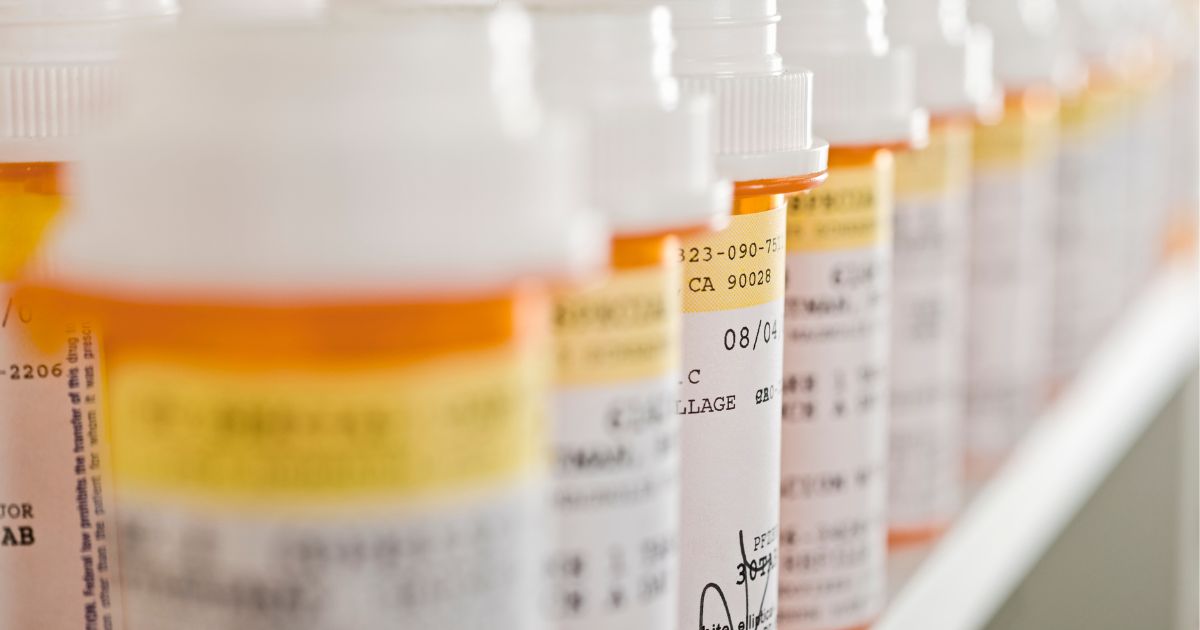What Is Methamphetamine?
Methamphetamine, commonly referred to as crystal meth or “meth,” for short, is a highly potent central nervous system stimulant. It can be used to treat ADHD or obesity, as it can boost concentration and lower appetite. However, this is rarely done today, as safer drugs such as Adderall and Semaglutide exist, respectively.
Methamphetamine has a high potential for abuse, which is why the DEA classifies it as a Schedule II substance. After marijuana, it’s the most popular illicit drug in the world. As a result, treatment programs for meth have popped up across the country. Through behavioral therapy and other substance abuse recovery offerings, South Coast Behavioral Health can help you heal.
What Does Meth Look Like?
Methamphetamine can take several forms. As a legal prescription drug, it usually takes the form of a pill.
It should be noted that there are illegal meth pills as well – however, as an illegal drug, meth tends to take two primary forms:
- Crystalline powder — Meth in its powdered form may appear white, off-white, or light pink. It typically has a crystalline structure and can be shiny or dull. The powder may be fine or coarse and is usually odorless. Meth powder can be snorted, injected, or taken orally.
- Crystal form — Also known as “crystal meth” or “ice,” this form of meth resembles clear, chunky, rock-like crystals or shards. The crystals can vary in size and shape, and they may have a bluish or white tint. The texture is typically rough, and the substance is brittle, easily breaking into smaller pieces. Crystal is usually smoked with a meth pipe or injected.
Meth can also take a waxy, gooey form known as meth base, but this is far less common.
It is essential to note that meth is an illegal and dangerous substance with severe consequences for users’ physical and mental health. If you or someone you know is struggling with methamphetamine addiction, stimulant addiction treatment in Southern California can help.
How Long Does Meth Stay In Your System?
Meth can stay in your system for up to 3 days after you stop taking it.
It can be detected through:
- Blood — One to three days
- Saliva — One to four days
- Urine — One to ten days
- Hair — Up to 90 days
It’s important to note that these figures are estimates and they only apply when meth is used alone. Combining meth with other drugs – for example, alcohol – will delay your body’s metabolism of meth. That could lead to meth appearing on drug tests longer than usual after consumption.
How Long Are the Effects of Meth?
The length of duration of the effects of meth depends on its form of administration. When smoked or injected (the two most popular methods), meth will produce a fast-acting but short-lived, intense euphoria.
Snorting meth or taking it orally yields a longer-lasting high, often lasting half a day. This high is also often marked by increased physical activity.
What Is the Half-Life of Meth?
The period it takes for a drug’s active ingredient to decrease by half in your body is known as the half-life. The half-life of methamphetamine is about 9 to 24 hours. This figure depends on the metabolism of the user, the amount used, the frequency of use, and other factors.
It is important to remember that meth can have profound and long-term effects on the body and brain, lasting considerably longer than its half-life, especially with chronic usage or large doses.
How Addictive Is Crystal Meth?
Crystal meth is an extremely addictive and dangerous stimulant. Its addictive potential lies largely in its ability to trigger the release of dopamine, a neurotransmitter responsible for feelings of pleasure and reward. The intense surge of dopamine reinforces drug-seeking behavior and contributes to the development of crystal meth addiction.
This can happen very fast, with many crystal meth users becoming surprised by how quickly they find themselves addicted to the drug.
The severity of a meth addiction will vary from person to person, depending on factors such as genetic predisposition, environmental influences, and the frequency and duration of use. However, it’s generally considered one of the most difficult addictions to break.
Symptoms of Meth Addiction
A key indicator of addiction to crystal meth is the inability to stop using the drug, even if the person wants to. The person may also build up a tolerance, needing more meth to reach the same high as before.
Aside from this, there are various withdrawal symptoms associated with crystal meth, including:
- Headaches
- Cravings
- Anxiety
- Psychosis
- Fatigue
- Agitation
Meth addiction can also lead to numerous health and social problems such as cognitive decline, heart issues, increased risk of infectious diseases, and severe dental problems known as “meth mouth.” The psychological and physical dependence on the drug can make quitting extremely difficult and often requires professional help, including medical detox and long-term therapy.
Stimulant Addiction Treatment Options
Methamphetamine addiction is serious but with proper treatment, recovery is possible. We offer unique levels of care for substance abuse treatment that can improve your overall health. The first step to any successful treatment is a full detox. South Coast Behavioral Health offers a full medical detox program with master ’s-level, certified physicians. Our expert staff will assist you or your loved one in managing meth withdrawal symptoms as they fight to clear the drug from their system.
After alcohol or drug rehab, proper treatment can begin. As with other forms of stimulant addiction, there are a variety of options for treating addiction to methamphetamine:
Inpatient Treatment
Those battling mental health issues or stimulant use disorder can receive support in a highly structured setting at our residential treatment facilities in Costa Mesa, Irvine, and Huntington Beach. There, patients get round-the-clock medical attention and monitoring while living at the institution full-time.
In addition to individual and group counseling, medication management, leisure activities, and family support services, these programs include a variety of therapeutic approaches.
Partial Hospitalization Programs (PHPs)
A step down from inpatient care, partial hospitalization programs provide a higher degree of care than conventional outpatient programs. Those who take part in Partial Hospitalization in Newport Beach can receive care five to seven days a week for several hours each day. Later that evening, they make their way back home.
With the help of these programs, people can continue to recover without putting their daily lives completely on hold, receiving intense therapeutic interventions like group and individual therapy, skill development, and medication management as necessary.
Intensive Outpatient Programs (IOPs)
For those leaving inpatient residential treatment or partial hospitalization, intensive outpatient programs are likely your next step.
With a focus on group therapy, individual counseling, and psychoeducation, patients receiving Intensive Outpatient Treatment in Newport Beach typically meet three to five days a week for a few hours each session. Participants can continue their employment or academic obligations while undergoing the support and therapeutic interventions required for recovery with this flexible treatment option.
Get Started Today
If you or a loved one are thinking of getting treatment for methamphetamine addiction but wonder how long addiction treatment is or have other questions, call us at 866-881-1184 or contact us here. Our highly qualified staff will be happy to help give you an idea of what to expect from your addiction recovery timeline, verify insurance, and help with any other questions you may have.
REFERENCES:
- Alcohol Interaction with Cocaine, Methamphetamine, Opioids, Nicotine, Cannabis, and γ-Hydroxybutyric Acid – PMC
- Drug Scheduling – DEA
- Know the Risks of Meth | SAMHSA























